Ethridge Family History & Genealogy
Ethridge Last Name History & Origin
AddHistory
Originally Etheridge
Name Origin
Ethel (Royal) Rich (Wealthy)
Spellings & Pronunciations
Etheridge
Nationality & Ethnicity
England
Famous People named Ethridge
Are there famous people from the Ethridge family? Share their story.
Early Ethridges
These are the earliest records we have of the Ethridge family.
Ethridge Family Members
Ethridge Family Photos
Discover Ethridge family photos shared by the community. These photos contain people and places related to the Ethridge last name.
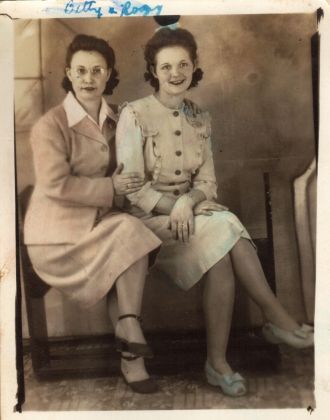
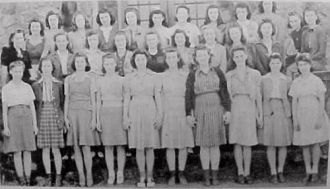
•
• First row: Katie Lee Sitton, Willene Smith, Arlene Phillips, Bleeka Leonard, Edna Pierce, Lee Anna Davis, Virginia Bradford, Vadah Butler, Juanita Elrod Juanita Elrod 1927-1997 (Juanita Elrod Swanson is my husband’s first cousin 1x removed). Louise Plemons.
•
• Second row: Blanche Keener, Margaret Hilley, Geneva Cobb, Lyndall Ethridge, Jean Red, Opal Davis, Gladys Bright, Arlie Patterson, Sarah Ruth Williams, Juliet Turvey, Cleo Keith, Hazel Mosteller.
•
• Third row: Eloise McEntire, Nell Springfield, Elizabeth Petty, Jewel Wright, Jean Wells, Frances Westfield, Peggy Sue Cox, Janet McCamey, Marie Hall
People in photo include: Katie Lee Sitton, Willene Smith, Arlene Phillips, Bleeka Leonard, Lee Anna Davis, Vadah Butler, Louise Plemons, Blanche Keener, Margaret Hilley, Geneva Cobb, Lyndall Ethridge, Jean Red, Gladys Bright, Arlie Patterson, Sarah Ruth Williams, Juliet Turvey, Cleo Keith, Hazel Mosteller, Eloise McEntire, Nell Springfield, Elizabeth Petty, Jewel Wright, Jean Wells, Frances Westfield, Janet McCamey, and Marie Hall
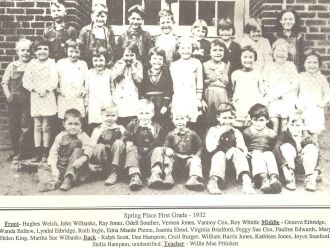
Front; Hughes Welch. John Wilbanks. Ray Jones. Odell Souther. Vernon Jones. Vannoy Cox (1926-2010). Roy Whittle.
Middle; Geneva Ethridge. Wanda Ballew. Lyndal Ethridge. Ruth Ingle. Edna Maude Pierce. Juanita Elrod 1927-1997 (Juanita Elrod Swanson is my husband’s first cousin 1x removed). Virginia Bradford. Peggy Sue Cox. Pauline Edwards. Mary Helen King. Martha Sue Wilbanks.
Back; Ralph Scott. Dee Hampton. Cecil Burger. William Harris Jones. Kathleen Jones. Joyce Stanford. Stella Hampton. Unidentified.
Teacher last on the right; Willie Mae Pritchett.
People in photo include: Hughes Welch, John Wilbanks, Ray Jones, Vernon Jones, Odell Souther, Roy Whittle, Geneva Ethridge, Wanda Ballew, Lyndal Ethridge, Ruth Ingle, Pauline Edwards, Martha Sue Wilbanks, Ralph Scott, Dee Hampton, Cecil Burger, Kathleen Jones, Joyce Stanford, Stella Hampton, and Willie Mae Pritchett
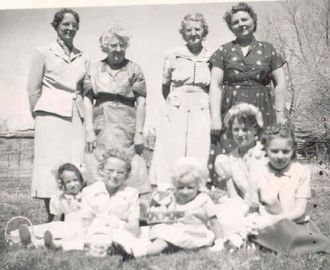
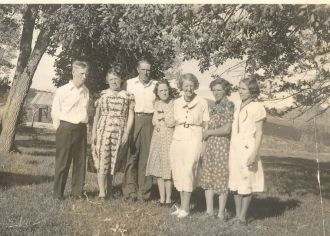
Burt Montgomery, Irene (Montgomery)Shelhamer, Frank Montgomery, Monta (Montgomery) Sprague, Gertrude (Montgomery) (Branson) Ethridge, Nellie (Montgomery) Carmen & Metta (Montgomery) (Wiser) Gearhart
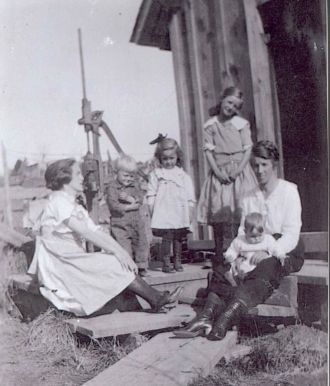
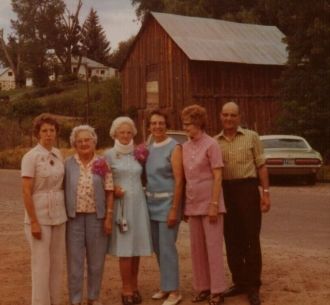
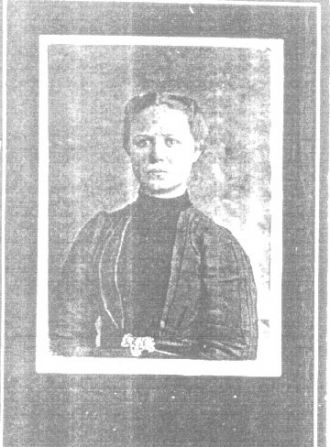

Ethridge.Mont,AL. Possibly WWII.
The pic was found when my wife & I secured the house & cut the grass. The woman had passed away & the house was taken over the bank. It is yours if you want it.
Ethridge Family Tree
Discover the most common names, oldest records and life expectancy of people with the last name Ethridge.
Updated Ethridge Biographies


Popular Ethridge Biographies



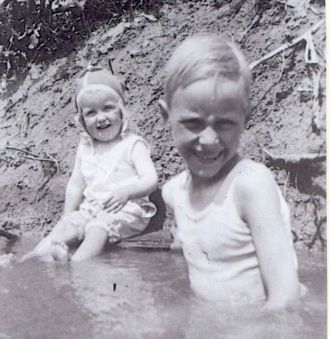


Ethridge Death Records & Life Expectancy
The average age of a Ethridge family member is 72.0 years old according to our database of 2,971 people with the last name Ethridge that have a birth and death date listed.
Life Expectancy
Oldest Ethridges
These are the longest-lived members of the Ethridge family on AncientFaces.


Other Ethridge Records
Share memories about your Ethridge family
Leave comments and ask questions related to the Ethridge family.
Followers & Sources

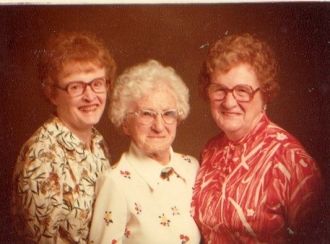
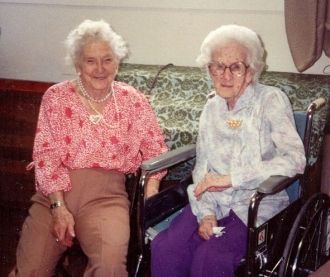


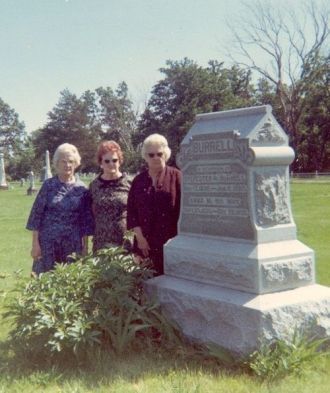

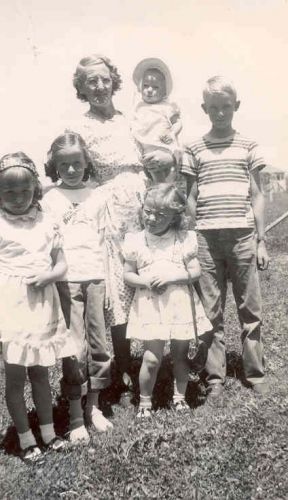

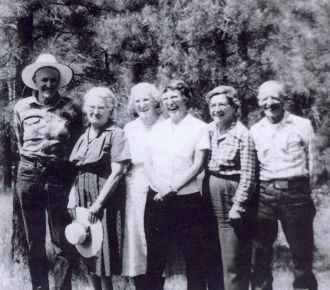
Durango, Colorado; Friday, March 31, 1950; by Harley Ashbaugh, Jr.
----in 1881, Roe was a young man, just 18; he lived at home on a ranch 2 1/2 miles south of Mancos; his neighbors included the Wetherall family which consisted of the parents, five sons and one daughter.
Three years earlier Richard Wetherall and Charlie Mason were hunting a stray herd of cattle (December 1888) in the Mancos valley for R.K. Wetherill, the former's father, when they came across the main ruins of the early cliff dwellers of Mesa Verde.
The Wetherill brothers had poked around in the ruins a little and had come up with some interesting finds; they's sold some of the skulls, pottery, stone implements and bones to the state historical society and had kept a larger collection at the Wetherall Ranch.
It took a young Swede by the name of Gustaf Nerdenskiold to organize an exploration party of some 25 men and exploit the ruins tho his original intentions were to spend about a week in the Mancos neighborhood as a tourist.
Roe was the youngest of the outfit; the party packed in to Mesa Verde to begin its three months of excavations.
There were no rodes into Mesa Verde at that time and the railroad had just come to Mancos shortly before; that meant the group must pack out everything they found, and that is what they did.
"Nordenskiold sent trainloads of mummies, pottery and other artifacts to Sweden," Ethridge explained. "Nothing was unimportant to him."
Roe told how the dust in the inner rooms was so fine that "you couldn't dig in it for more than 15 or 20 minutes at a time." The dirt had accumulated to a depth of two or three feet and when stirred up made it hard to breathe.
The crew uncovered dozens of mummies which ultimately went to Sweden. One of the mummies, a woman, was complete except for her little toe. The Swede got her too.
Most of the mummies had their knees pulled up against their chins and were set away in rear rooms. Many were sitting on their haunches in an upright position. A few were found in almost all parts of the ruins.
Members of the crew took turns packing the finds to the railroad station at Mancos, a distance of some 25 miles and a day's journey.
"We could only pack one mummie at a time," Roe explained. "We'd put them in a gunnysack, sling them over our shoulders and away we'd go. We took it slow so the bones wouldn't rattle to pieces." The mummies were small and perhaps not over five feet long.
The group found several youngsters wrapped in feathers and bark; they opened one wrapping to see that it contained several infants.
One of the mummies, a man, had been murdered as evidenced by a hole in the back of his head, made perhaps by a stone axe. He lay with his head resting in a fireplace just as he had fallen, not flexed as was the customary fashion.
The party camped on the top of the cliff for several weeks that summer but eventually was rained out so took refuge in the Sprucetree House.
In the new quarters the men heard a rattling of kitchen utensils one night. Some told the Swede that spooks were coming in; next night, the group sat up to watch, and in due time four or five young skunks made there appearance, looking for food in the cooking pans.
Along about that time, the federal government became interested in the Swede's doings, and brought him to court to account for his acts. Uncle Sam wanted to get back the loot that the young explorer had removed from this country.
The result was that Nordenskiold was found guilty and was fined $2,000.00 and costs; he willingly paid the fine and went ahead shipping his treasures to Sweden.
The men found corn and beans in large pottery jars; some were sealed over with mud. They broke open a few bean jars and then soaked them a week before planting them.
Part of the beans were planted at the Cliff House and the remainder at the Wetherill ranch near Mancos.
"They were about as hard after lying in the ground all summer as they were when we took them out of the jars," Roe admitted with a twinkle in his eyes.
The bean was similar to the navy bean of today, only it was clear brown in color instead of white; the group also found many pumpkin seeds that the ancestors of the Zuni and Hopi Indians of today stored for future use.
The men discovered turkey roosts in Balcony House where the cliff dwellers kept their wild turkeys and ate them when needed.
When the excavating party ran out of beef, members of the crew hunted wild cattle on the mesa above the ruins; they hunted the cattle like deer, according to Roe, and even killed many more than they needed for themselves. These they packed out and sent by rail to Silverton and other Basin towns for sale.
The doors of the cliff dwellers who inhabited Mesa Verde from about 400- 1290 A.D. are too narrow and too low for the people of today to go through without crawling on their hands and knees.
Sometime between 1891 and 1906 when Mesa Verde became a National Park, Roe was guide for a New Yorker who came all the way out here to see the ruins. The two took a trip from Mancos by horse; arriving at the site of the ruins, Roe took the lead, and his tourist, a man of 250 lbs. or more, brought up the rear.
The two went through a little door and then crawled through another opening.
On November 4, 1891, Roe, Nordenskiold and Al (Wetherill) set out for Marble Canyon in the Grand Canyon after they had completed their excavations at Mesa Verde.
On the way to Marble Canyon from the Four-corners area, the three stopped at a Moki (the term then used for Hopis) trading village called Wolpi; it was the westernmost of seven Moki villages. There, they could lock their provisions in their room so they weren't bothered by the Indians stealing their provisions from them when they went out to see the country together.
"We stayed there for about two weeks," Roe said. "One night along about 2 or 3 in the morning a Moki came to the door and woke us up.
"I went to the door and the Moki pulled a chicken from his blanket and wanted to trade it for coffee. I ask the others if they wanted a chicken and they said said "yes."
Then the Moki reached down in his blanket and pulled out some eggs that he wanted to trade for part of a cup of sugar; I got the sugar and traded him the eggs, then went back to bed," Roe related.
Reminiscing about the trip the gray haired man told how the Mokis scattered when one of the party set up the camera and got under the black cloth. They's scamper onto the roofs of their dwellings and peek around objects until the picture taking was over and they'd crawl down.
By the time the group had reached Marble Canyon they had taken a lot of pictures; things looked pretty dismal, however, when one of the 13 pack horses fell over backward and broke nearly all the glass slides. The horse wasn't hurt in the fall, but after that Roe rode it and packed the one he'd been riding.
The three returned to Mancos from their Marble Canyon trip, and from there Nordenskiold returned to Sweden to organize his findings and write his book.
Scarcely a year later, Nordenskiold took sick with the flu and died. His father completed the book which his son had started and sent one each to the Wetherill brothers; one of the books is now in the Durango Public Library. Roe looked over Al's book which the elder Nordenskiold had given him.
Though Richard and Alfred Wetherill made the first explorations of the main ruins at Mesa Verde, the first discoverers of the ruins were W.H. Jackson and John Moss, his guide in 1874 - 14 years before the Wetherills.